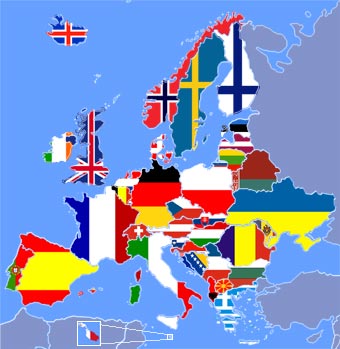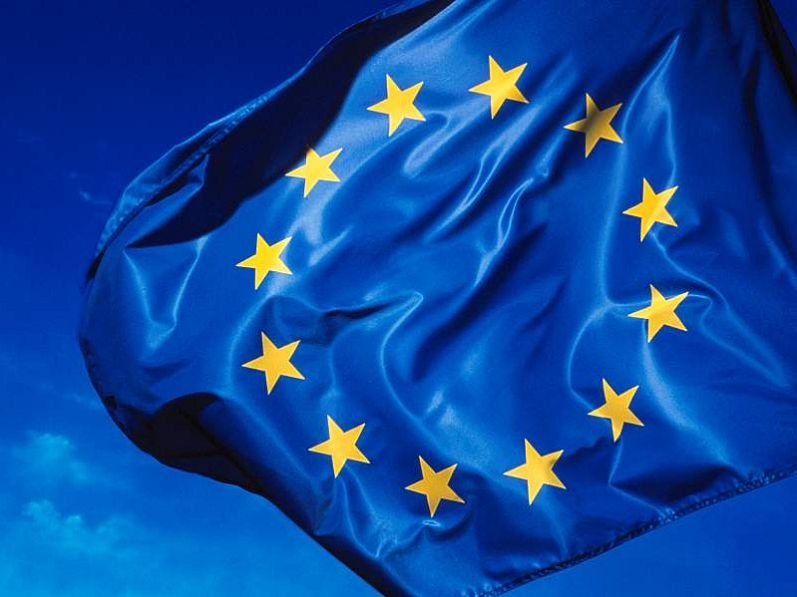REPUBLIC OF MACEDONIA ON THE WAY TO THE EU

Since its independence in January 1991, the Republic of Macedonia has emphasised membership in the European Union as one of its trategic objectives. While carrying out this commitment, the Republic of Macedonia has promoted itself as a reliable partner and ally of the European Union which passed a series of stages in its EU relations, its approximation and integration in the EU.
On 15 January 1999, the European Union established the Arbitration Commission headed by the President of the French Constitutional Court, Mr. Robert Badinter. The Commission determined that the Republic of Macedonia had fulfilled all the criteria for international recognition and that its name did not pose any territorial threat.
However, due to the opposition by Greece that the Republic of Macedonia be recognised by its constitutional name, the process of its international recognition and establishment of diplomatic relations with the EU was delayed. Full diplomatic relations between the RM and EU were established in December 1995 and the Republic of Macedonia opened its Mission to the EU.
In 1996 the Republic of Macedonia became a full partner in the PHARE Programme established by the EU to help the reforms in the countries of Central and Eastern Europe, seeking accession to the EU.
In June 1997, the Cooperation Agreement between the Republic of Macedonia and the European Communities and the Transport Agreement were concluded, followed by the Textile Agreement. The European Union opened the representative office of the European Commission in the Republic of Macedonia.
In February 1998 political dialogue was held for the first time between the RM and EU, and in March 1998 the first meeting of the Common Cooperation Council was held. It worked successfully well until the establishment of the new body under the Stabilisation and Association Agreement.
In 1999, the European Commission established a new framework of cooperation of the EU with the countries of the Western Balkans (Republic of Macedonia, Albania, Bosnia and Herzegovina, Serbia, Montenegro and Republic of Croatia) labelled Stabilisation and Association Process (SAP).
In 2000, the Office of the European Commission was elevated at the level of Delegation of the European Commission.
The Council of Ministers of the European Union in December 2000 adopted a decision (Regulation) establishing CARDS Programme as a European Union Assistance Programme for the SAP countries.
The Republic of Macedonia was the first among SAP countries to sign a Stabilisation and Association Agreement in April 2001.
On 22 March 2004, in Dublin, Republic of Ireland, the Government of the Republic of Macedonia submitted its application for Membership in the EU, confirming its continuous and clear political commitment for joining the European Union.
At the Brussels Summit on 17 December 2005, the European Council decided that the Republic of Macedonia be granted candidate status for European Union membership. Since then, by the end of each year, the European Union has published regular progress reports for the Republic of Macedonia.
On 30th October 2007, Financial Agreement for 2007 National Programme within the Instrument for Pre-accession Assistance (IPA) and the Framework Agreement were signed between the Republic of Macedonia and the Commission of the European Communities on cooperation for financial assistance. The Republic of Macedonia was the first country in the region whose projects were approved by the EC and the first country in the region to sign the Financial Agreement thus enabling use of IPA funds.
On 1 January 2008 the Agreement on Visa Facilitation and Readmission with the EU entered into force.
On 18 February 2008, the European Council adopted the Accession Partnership for the country, thus updating the previous European Partnership of January 2006.
In February 2008, dialogue for visa liberalization for the citizens of the Republic of Macedonia has started.
In March 2008, the European Commission adopted the Communication on the Western Balkans, outlining the benchmarks for moving to the next stage in the accession process.
The same year, in May 2008, the European Commission presented the visa liberalization roadmap, clearly and precisely setting out a number of benchmarks, in blocks, that needed to be fulfilled by the Republic of Macedonia.
On 12 March 2009, the European Parliament adopted a Resolution on the 2008 Progress Report for the Republic of Macedonia calling for the start of negotiations for membership in the EU.
On 15 July 2009, the European Commission, on the basis of the reforms made and the results achieved, decided to propose granting citizens of the Republic of Macedonia visa liberalisation.
After the publishing of its Report on 14 October 2009, the European Commission recommended opening negotiations for accession of the Republic of Macedonia to the European Union. The decision has been based on the convincing progress and substantially addressed the key reform priorities, known as the 8+1 benchmarks, and the fulfilment of the Copenhagen political criteria in particular.
On 1 December 2009, after a long and painstaking process of negotiations and after the unsuccessful referendums in France and Netherlands, and in Ireland afterwards, in the second attempt and with certain concessions, the Treaty of Lisbon entered into force. The Treaty, despite providing for increased competences for the European Union, the European Parliament and the national parliaments of members states, opened the way for institutional reforms and for new enlargements with new member states in the EU, including the Republic of Macedonia.
On 30 November 2009, the European Council on its session decided to grant visa liberalization to the citizens of the Republic of Macedonia, starting from 19 December 2009.
The European Parliament, on its session held on 10 February 2010, adopted the Resolution on the 2009 progress report on the Republic of Macedonia, in which it calls on the Council to confirm the Commission's recommendation without further delay at the summit in March 2010 to decide for opening of negotiations for membership with the Republic of Macedonia. The EP stressed that the clear prospect of EU membership continues to be the main driving force for the reformс in the country and is of the utmost importance for the political stability and the common goal of the country's political actors and ethnic groups in the Republic of Macedonia.
ACCESSION TO THE EUROPEAN UNION
 Any country seeking membership of the European Union expresses its intention by submitting application for membership to the Council of the European Union. The Council asks the Commission to assess the applicant’s ability to meet the conditions of membership.
Any country seeking membership of the European Union expresses its intention by submitting application for membership to the Council of the European Union. The Council asks the Commission to assess the applicant’s ability to meet the conditions of membership.
The criteria that each country has to fulfill are known as the Copenhagen Criteria, and they include political, economic and administrative criteria. The political criteria entail stability of institutions guaranteeing democracy, the rule of law, human rights and respect for and protection of minorities.
The criteria established by the Copenhagen European Council in 1993 also include existence of a functioning market economy and the capacity to cope with competitive pressure and market forces within the Union (economic criteria).
Furthermore, each country has to be able take on the obligations of membership, including adherence to the aims of political, economic and monetary union (acceptance of the Аcquis communautaire).
The administrative criteria, known as Madrid criteria, established at the 1995 Madrid European Council, require capability of adapting the applicant countries' administrative structures to the mechanisms in the EU public administration.
If the opinion provided by the European Commission is positive, and the Council unanimously agrees with the adoption of a negotiating framework, then the negotiations for accession of a new member are considered officially opened.
A necessary precondition for the accession process is adoption of a pre-accession strategy designed to prepare the candidate countries for future membership. It encompasses the following frameworks and mechanisms: Europe Agreements/Association Agreements/Stabilisation and Association Agreements, Accession Partnerships/European Partnerships, Pre-accession assistance, Co-financing from International Financing Institutions, Participation in EU Programmes, Agencies and Committees, National Programme for the adoption of the acquis, Progress Reports, Political Dialogue.
The first step in negotiations is "screening" – an in-depth analysis of the EU laws with which the candidate country must comply. The laws are explained to the candidate countries and any problem areas identified jointly. A "screening report" is then drawn up for each country and each area of legislation ("chapter"), as a basis for further negotiations.
Each candidate country submits a negotiating position, and the Commission sets out its view ("draft common position") to the Council.TheCouncil finalises the EU's common position, opening the way for negotiation on each area of legislation.
The Commission keeps the Council and the European Parliament informed about the candidate countries throughout the process, through regular reports, strategy papers and clarifications on conditions for further progress. Monitoring continues right up until accession. This makes it possible to give additional guidance as countries assume the responsibilities of membership, and also guarantees to the current member states that new member states are meeting the conditions for accession.
When negotiations on all the chapters are completed, the detailed terms and conditions are incorporated into a Draft Accession Treaty. If the Treaty wins the support of the Council, the Commission, and the European Parliament, it is signed by the candidate country and the representatives of all the Member States, and then submitted to the Member States and the candidate country for Ratification, according to their respective constitutional rules. Once the ratification process is complete, the treaty enters into force on its scheduled date, and the accession state becomes a member state.